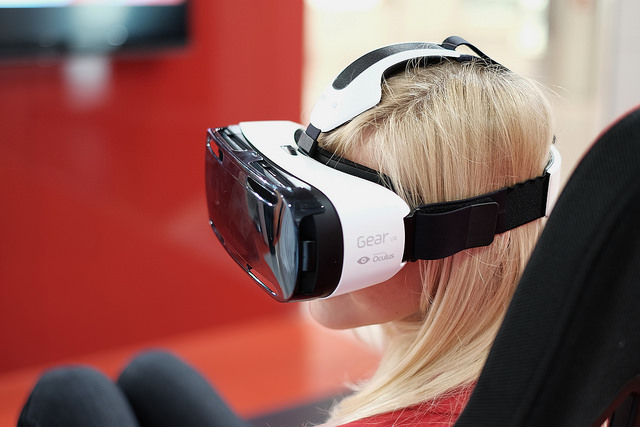The year is 2040 and cataract surgery has become highly advanced
I have 30 cataract patients on my morning list today. Worldwide the ageing population has increased a lot. That is the reason why the need to do cataract surgery in huge volumes has exploded.
I have a team of technicians who set up my operating theatre. I have 5 separate cataract machines in 5 different rooms and one technician assisting in each.
My first 5 patients arrive. Each one goes into a separate room. We give them an oral anaesthetic and pupil dilation combination drug called OcuReady. We incorporate this into their cup of tea and biscuit – people still drink tea in the future.
The oral anaesthetic targets their ophthalmic nerve and numbs their eye for a short period for surgery. It also numbs the skin sensation around the eye. So they don’t feel the lids and or them opening during the procedure. The drug also targets the constrictor and dilator muscles of the pupil. Like this, there is no need for those topical eye drops that sting.
Each patient sits at the new cataract machine called Elixir. It is a combination unit that can perform intraoperative biometry, 3D eye imaging and multi-view intraocular video capture, intra-operative biofeedback, safe cataract removal, new biosynthetic lens implantation, and patient auto-refraction.
We operate the patients in sitting up positions, at 45 degrees or lying down if they prefer. The operating chair has an automated moulding system. The system adapts to each patient to ensure the greatest individual comfort.
My first patient chooses to sit up. We incorporate the Elixir into a small headset, which the patient wears. The eye that requires an operation has a suction cap. It holds the eye in place with laser guided movement detection. The other eye watches a short favourite film selected by the patient beforehand.
As the suction cap engages to the cornea without any pain, a film starts playing in the non-operated eye. Elixir has direct visualisation multi-view micro-cameras with auto-illumination. This allows the surgeon to see structures like the ciliary body, lens zonules, capsular bag and anterior hyaloid face in high definition. It also creates a high definition 3-dimensional image of the whole eye. This also provides useful biofeedback on the stress of the zonules and vitreous body movement. Elixir + has extra characteristics such as constant intraocular pressure measurement and optimization and endothelial cell counting.
Elixir takes 15 seconds to produce all its images. It can be visualised on 3 holographic interactive computer screens.
Elixir’s prize component consists of a fine 0.4127mm fibre optic needle probe. It consists of an in-port and out-port. Elixir automatically introduces the needle probe into the anterior chamber through the limbus. This happens with laser guidance and visual feedback of its position through the miniature camera viewing system. And then continues through the anterior capsular bag into the centre of the cataract.
The needle probe then delivers a compound known as Phacolyse to dissolve all the cataract in the bag. But its specific properties have no effect on the capsular bag. Elixir takes one minute to remove the cataract with no heat generated within the eye. Once the cataract is completely liquefied, the cataract is aspirated through the out-port of the needle probe. The in-port maintains the capsular bag shape and structural tension by delivering a solution. This solution also dissolves any remaining soft lens matter remaining within the capsular bag.
Once I am satisfied that all the cataract has been removed, I start biosynthetic lens implantation. The in-probe delivers an optically clear liquid compound known as OcuFill to the fill the capsular bag. The bag then solidifies in one minute. OcuFill is completely biologically inert. It remains seeable clear for approximately 100 years and is non-degradable with no effect on capsular bag.
I also receive constant biofeedback from the needle probe and suction cap. I also receive continual intraoperative intraocular pressure measurements, zonular stress dynamics and corneal compression data including a pre-operative and post-operative corneal endothelial cell count. This calculates endothelial cell loss during the procedure. Elixir optimises all these parameters to reduce the chance of intra-operative complications.
Once OcuFill has filled 95% of the capsular bag, Elixir checks the patient’s auto-refraction in vivo. This will ensure the attainment of the required outcomes. Normally,95% of patients achieve a spectacle-free vision for near and distance with OcuFill.
At the end of biosynthetic lens implantation the needle probe is removed. The one limbal wound self-seals as it so small.
We remove the headset and the oral anaesthetic and pupil dilation drug starts to wear off. My patient’s pupil constricts and normal sensation returns to the patient’s face and eye.
They will get a cup of tea from us. The tea also contains a combination of antibiotic, anti-viral and monoclonal antibody anti-inflammatory medicines.
The whole procedure takes 7 minutes and my patient can see perfectly as she leaves the building.
29 more patients to go.
The image above was taken by Kārlis Dambrāns and used above is used with permission.


![Five Facts about Toric Intra-ocular Lenses [Infographic]](https://jaheedkhan.co.uk/wp-content/uploads/2016/12/jk-toric-lenses-500x383.jpg)

Interesting